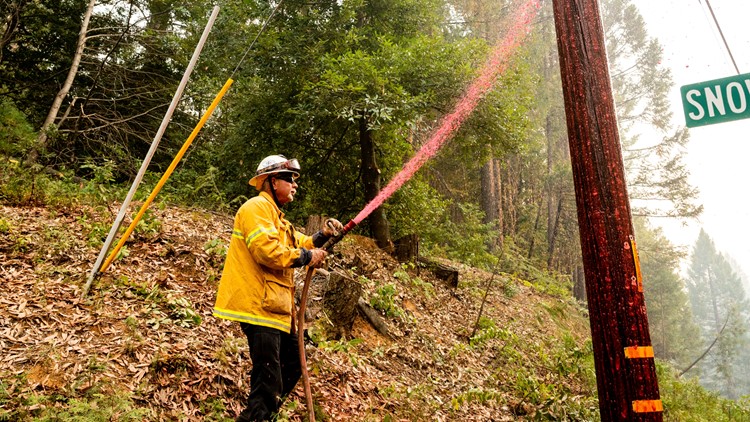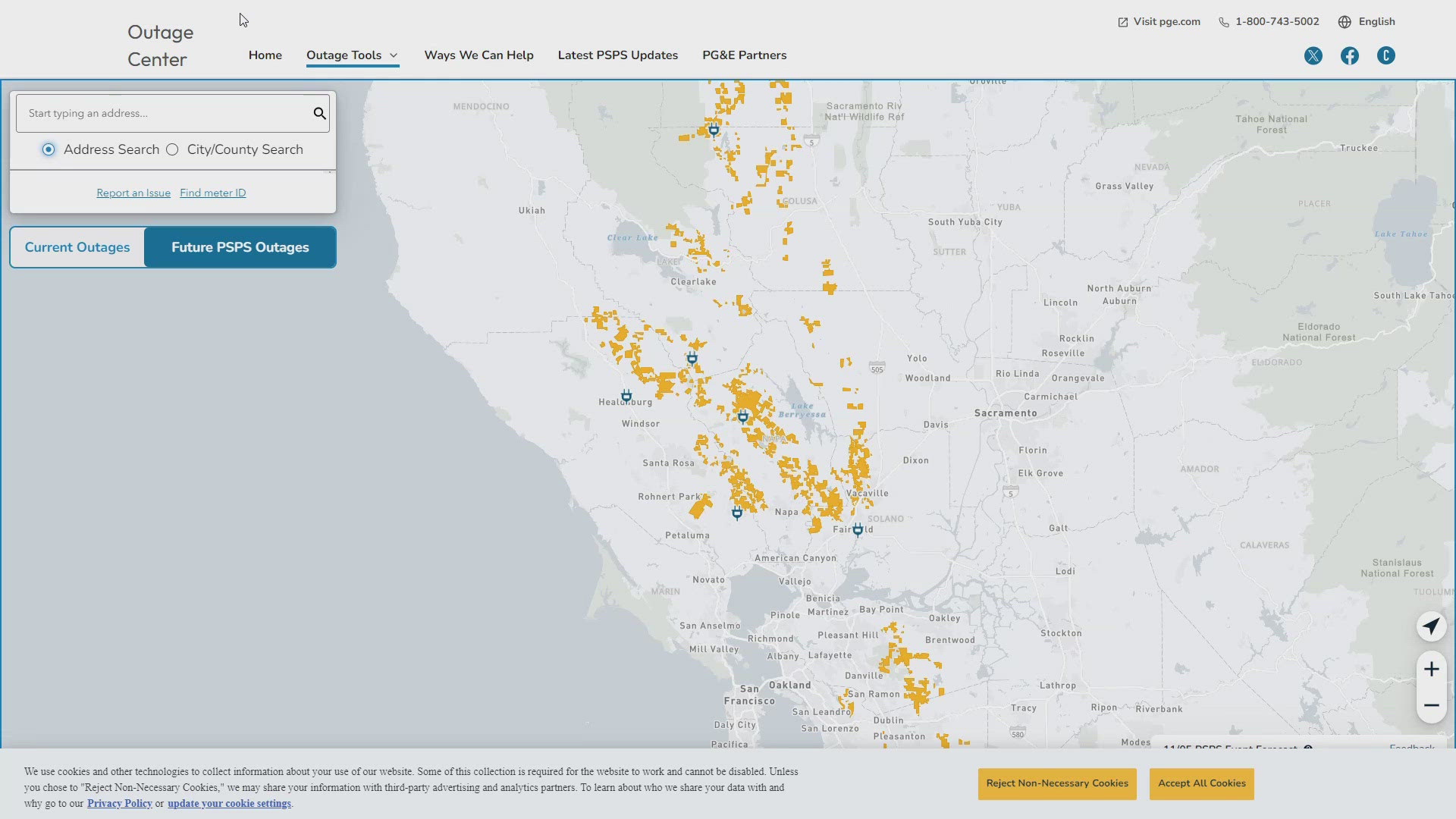FORESTHILL, Calif. — Calmer weather in Northern California helped firefighters battle a smoky wildfire threatening thousands of mountain homes on Monday, while remnants of last week's Pacific hurricane continued to produce thunderstorms that caused flash flooding in the southern part of the state, where crews made headway against another huge blaze.
Major fires were also burning in Oregon and Washington, blanketing swaths of the Western states in thick smoke and prompting alarms about unhealthy air quality.
The Mosquito Fire in the foothills east of Sacramento spread to nearly 73 square miles (189 square kilometers), with 10% containment, according to the California Department of Forestry and Fire Protection, or Cal Fire.
Forecasters predicted a respite from the hot and gusty weather that dogged firefighters last week, but possible fuel sources from fine grass to big trees remain very dry and flammable, according to a Cal Fire incident report Sunday night.
After a reconnaissance flight Sunday afternoon, Incident Commander Rick Young said that although the fire's growth had slowed, "where it was burning, it was really burning."
More than 5,800 structures in Placer and El Dorado counties were under threat and some 11,000 residents of communities including Foresthill and Georgetown were under evacuation orders.
In Southern California, milder temperatures and rain aided crews battling the massive Fairview Fire about 75 miles (121 kilometers) southeast of Los Angeles after days of sweltering heat.
The 44-square-mile (114-square-kilometer) blaze was more than half-contained Monday morning. The fire has destroyed at least 30 homes and other structures in Riverside County. Two people died while fleeing the blaze Sept 5.
The southern part of the state welcomed the cooler weekend weather after what's left of Hurricane Kay veered off the Pacific Coast and faded, helping put an end to blistering temperatures that nearly overwhelmed the state's electrical grid.
But unstable air persisted and powerful thunderstorms unleashed flash floods that inundated roads and highways across inland areas. More than 50 people were rescued after mudslides trapped at least 24 cars and a responding fire truck in the mountainous Lake Hughes area north of Los Angeles on Sunday. No injuries were reported.
Flood watches and advisories had mostly expired, but slow moving thunderstorms were possible Monday, the National Weather Service said on Twitter.
To the north, remnants of Kay caused flooding Saturday that stranded about 40 vehicles and closed a stretch of State Route 190 in Death Valley National Park. The park is still cleaning up from floods five weeks ago that closed many key roads.
Smoky skies from wildfires in many areas of the West caused air quality to deteriorate Monday, with dangerous levels of particulate pollution from wildfires detected by government and private monitors in portions of eastern Oregon and Washington, Northern California, central Idaho and western Montana. In some areas, people were told to avoid all outdoor activity until the pollution cleared.
The smoke was expected to be particularly thick in the area around Truckee, California, and across the state border near Reno and Carson City, Nevada.
Winds were forecast to push the smoke east later Monday, giving some relief to parts of western Oregon and Washington, according to government forecasts. But the smoke was expected to linger in many mountain valleys and worsen in parts of Idaho and Montana before improving in the coming days.
In Washington, fire officials scrambled to secure resources for a blaze sparked Saturday in the remote Stevens Pass area that sent hikers fleeing and forced evacuations of mountain communities. As of Monday, the Bolt Creek Fire was 2% contained and had scorched nearly 12 square miles (31 square kilometers) of forestland about 65 miles (104 kilometers) northeast of Seattle. A larger incident management team and additional fire crews were slated to arrive Tuesday, officials said.
In Oregon, utility companies said Monday they restored power to tens of thousands of customers after shutting down service over the weekend to try to prevent wildfires during high winds, low humidity and hot temperatures.
Both Portland General Electric and Pacific Power enacted planned power shutoffs Friday as gusting winds and low humidity moved into Oregon, posing extreme fire danger. The utilities were concerned that the winds would cause power lines to break or sag, making sparks that could ignite tinder-dry vegetation.
Power shut-offs due to extreme fire weather, common in California, are new to the Pacific Northwest.
South of Portland, evacuation levels were reduced near the 135-square-mile (349-square-kilometer) Cedar Creek Fire, which has burned for over a month across Lane and Deschutes counties. Firefighters were protecting remote homes in Oakridge, Westfir and surrounding mountain communities and sheriff's officials warned that people should remain ready to leave at a moment's notice should conditions change.
According to the Northwest Interagency Coordination Center, this weekend there were more than 400 square miles (1,035 square kilometers) of active, uncontained fires and nearly 5,000 people on the ground fighting them in Oregon and Washington.
Scientists say climate change has made the West warmer and drier over the last three decades and will continue to make weather more extreme and wildfires more frequent and destructive. In the last five years, California has experienced the largest and most destructive fires in its history.
___
For more AP coverage of the climate and environment: https://apnews.com/hub/climate-and-environment
WATCH ALSO:





















